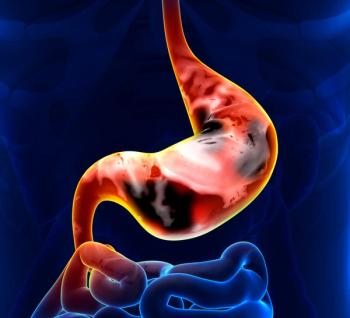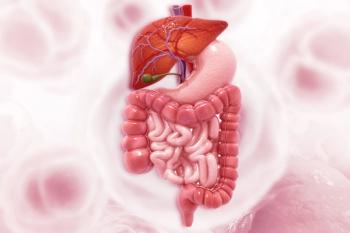
ASCO GI: Ramucirumab Improved Survival in Metastatic Gastric Cancer
Adding ramucirumab to paclitaxel significantly increased survival in patients with metastatic gastric cancer whose disease had progressed on first-line therapy.
Adding ramucirumab, a fully human monoclonal antibody against VEGFR2, to paclitaxel chemotherapy significantly increased survival compared with paclitaxel alone (9.63 months vs 7.36 months, respectively) in patients with metastatic gastric cancer who had progressed on first-line therapy. The global phase III randomized, double-blind RAINBOW study also showed that patients on the experimental combination therapy arm had better progression-free survival (4.4 months vs 2.9 months; P < .0001). Quality of life was also improved for patients treated with ramucirumab plus paclitaxel. These results were
Twenty-eight percent of patients responded to the combination treatment compared with 16% of patients who were treated with monotherapy (P = .0001). The overall survival hazard ratio (HR) was 0.807 (P = .0169).
The risk of tumor progression was decreased by 36% for patients treated with ramucirumab (HR of 0.635 for progression-free survival; P < .0001). The median time to progression was 5.5 months in the experimental combination arm and 3 months in the paclitaxel arm (P < .0001).
Lead study author Hansjochen Wilke, MD, of the Kliniken Essen-Mitte in Essen, Germany, called the 2-month gain in survival “an astonishingly good result in such a challenging patient population,” during a press briefing. “The result was statistically significant and also clinically meaningful.”
The trial recruited 665 patients with metastatic gastroesophageal junction (GEJ) and gastric adenocarcinoma who had signs of disease progression after 4 months of first-line platinum- and fluoropyrimidine-based chemotherapy. Patients were randomized to receive paclitaxel at 80 mg/m2 on days 1, 8, and 15 of a 4-week cycle, plus either placebo or 8 mg/kg IV of ramucirumab every 2 weeks until disease progression or unacceptable toxicity.
“Clinically relevant nonhematological grade 3 or 4 events were not frequent,” said Wilke, who also noted that the side effects for patients on the trial were manageable. Hypertension is often linked to anti-angiogenesis therapy. In this study, there was no grade 4 hypertension. Neutropenia was more frequent in the combination therapy arm compared with the paclitaxel alone arm. The incidence of febrile neutropenia was low and similar in both arms (3.1% in the combination arm vs 2.4% in the paclitaxel alone arm).
Grade 3 or greater adverse events that occurred in more than 5% of patients in the combination and monotherapy arms included neutropenia (40.7% vs 18.8%, respectively), leukopenia (17.4% vs 6.7%), hypertension (14.1% vs 2.4%), anemia (9.2% vs 10.3%), fatigue (7% vs 4%), abdominal pain (5.5% vs 3.3%), and asthenia (5.5% vs 3.3%).
Treatment of gastric cancer remains an unmet need, with relatively few therapy options for those with advanced disease. Gastric cancer is the second leading cause of death from cancer in the world, and the disease has a poor prognosis-the median overall survival is only 3 to 3.5 months without second-line treatment. With second-line treatment, the median overall survival is about 4 to 5 months. In the United States and Europe, there have been few phase III practice-changing trials that have shown a benefit of second-line therapy, which has resulted in only about 30% of patients receiving second-line therapy in these regions. In comparison, most Japanese gastric cancer patients receive second-line chemotherapy treatment and have longer median overall survival.
The placebo-controlled phase III REGARD trial showed that ramucirumab alone can improve the survival of metastatic gastric cancer patients in the second-line setting. “This is the only study to date that has demonstrated a 2-month survival improvement in this setting and also shows a relatively high response rate of 28% with the combination therapy,” said Smitha Krishnamurthi, MD, who specializes in gastrointestinal cancers at the University Hospitals Case Medical Center in Cleveland, Ohio, and was the moderator of the press briefing. “We see that in second-line gastric cancer, ramucirumab improves survival compared to best supportive care, according to the REGARD study, and now we also see that ramucirumab adds to the efficacy of chemotherapy.”
There are currently no second-line agents approved for treatment of advanced gastric cancer in the United States. In October 2013, the US Food and Drug Administration assigned a Priority Review to a regulatory submission for ramucirumab as a single-agent second-line treatment for metastatic gastric cancer based on results of the REGARD trial. The antibody therapy is also being tested in phase III trials for colorectal, liver, and lung cancers.
Newsletter
Stay up to date on recent advances in the multidisciplinary approach to cancer.

















































































